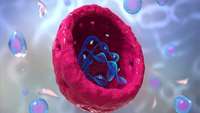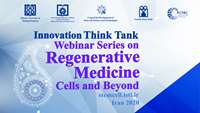Has The Cellular Aging Master Circuit Been Discovered
Humans have long searched for the possibility to extend life and some to even become immortal. But when it comes down to it many consider this to just be a flight of fanciful dreams. But according to research this is not necessarily true. In recent years research is indicating that we can take steps to extend our healthspan and in turn longevity.
Continuous survival of neurons is intrinsically programmed during development
Most neurons are created during embryonic development and have no "backup" after birth. Researchers have generally believed that their survival is determined nearly extrinsically, or by outside forces, such as the tissues and cells that neurons supply with nerve cells.
Researchers devise approach to treat rare, incurable form of blindness
Best vitelliform macular degeneration, or Best disease, is an inherited eye condition that typically leads to blindness over the course of a few decades. The disease can be caused by more than two hundred mutations in the BEST1 gene.
Researchers identify microRNA that shows promise for hair regrowth
Researchers from North Carolina State University have identified a microRNA (miRNA) that could promote hair regeneration. This miRNA—miR-218-5p—plays an important role in regulating the pathway involved in follicle regeneration, and could be a candidate for future drug development.
Lego-inspired bone and soft tissue repair with tiny, 3D-printed bricks
Tiny, 3-D-printed bricks have been designed to heal broken bones—and could one day lead to lab-made organs for human transplant.
Fat cell hormone enhances therapeutic potential of MSC therapy
Mesenchymal stem cells (MSCs) have the potential to differentiate into a range of different cell types, including bone, fat, and muscle cells. But it's their ability to stimulate the repair of damaged tissue that has captured the interest of researchers worldwide, with MSCs demonstrating therapeutic effects in the treatment of conditions such as heart disease, liver cirrhosis, and diabetes.
How to repair your gut
In a world first, Monash University researchers have identified a key biomolecule that enhances the repair of your gut lining by prompting stem cells to regenerate damaged tissue.
Not Just Stem Cells: The Potential in Umbilical Cord Exosomes
Exosomes, the small—normally only 30–100 nano-meters across—extracellular vesicles released from cells are not only carriers of cellular waste, as once believed, but also now known to facilitate cellular functions important to survival such as cell-to-cell communication and immunological responses.
Scientists find a simpler way to make sensory hearing cells
Scientists from the USC Stem Cell laboratories of Neil Segil and Justin Ichida are whispering the secrets of a simpler way to generate the sensory cells of the inner ear. Their approach uses direct reprogramming to produce sensory cells known as "hair cells," due to their hair-like protrusions that sense sound waves. The study was published today in the journal eLife.












